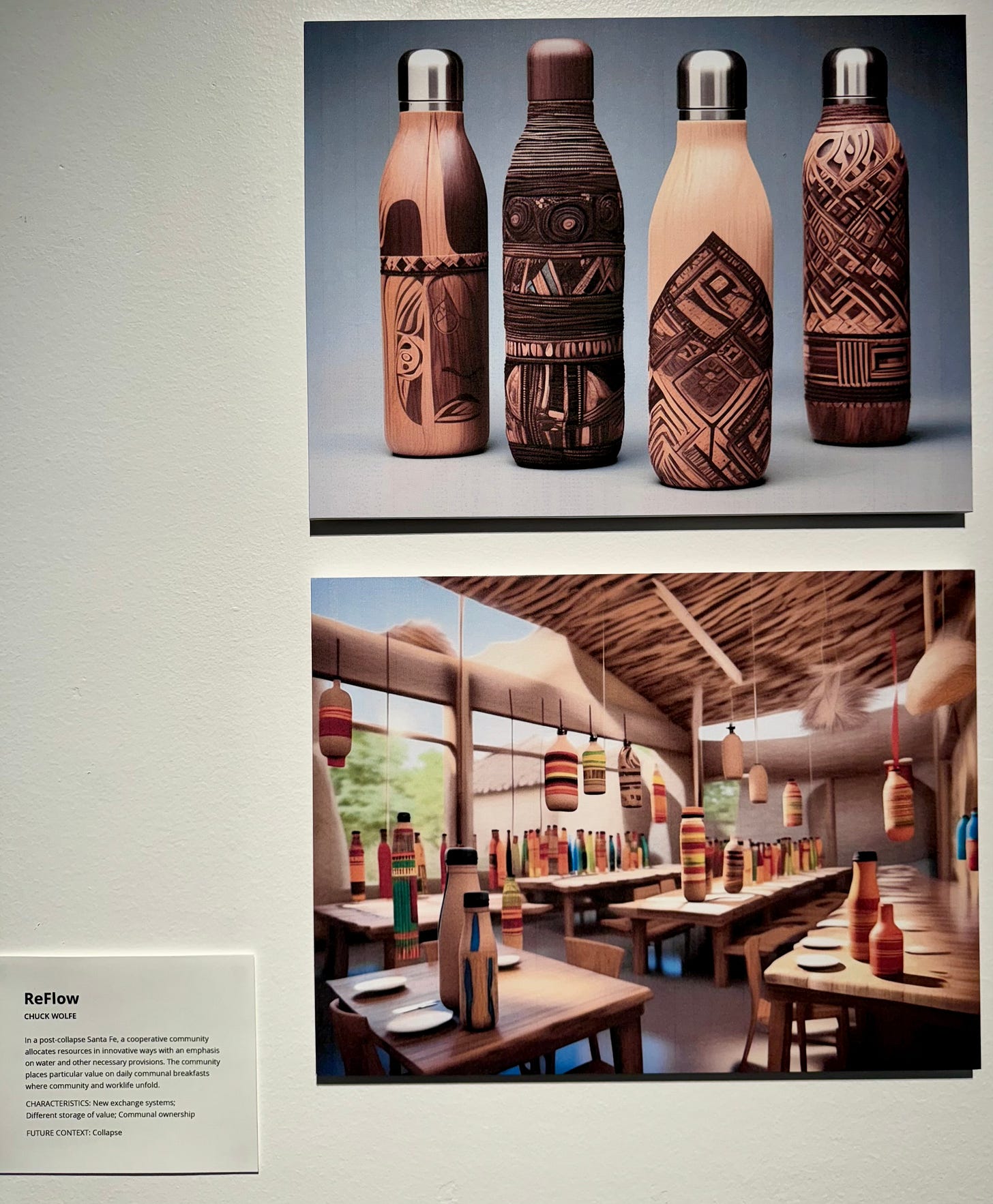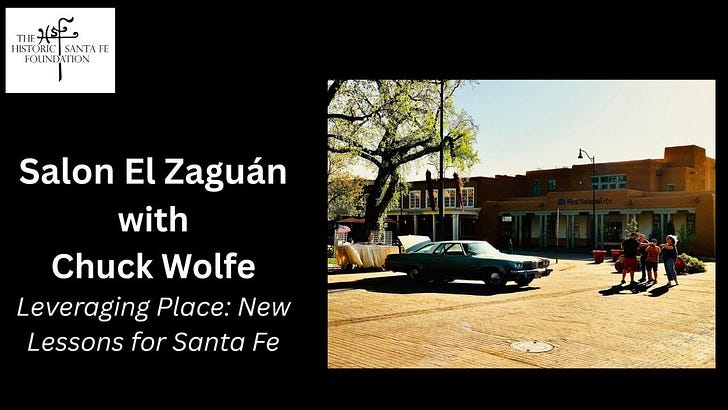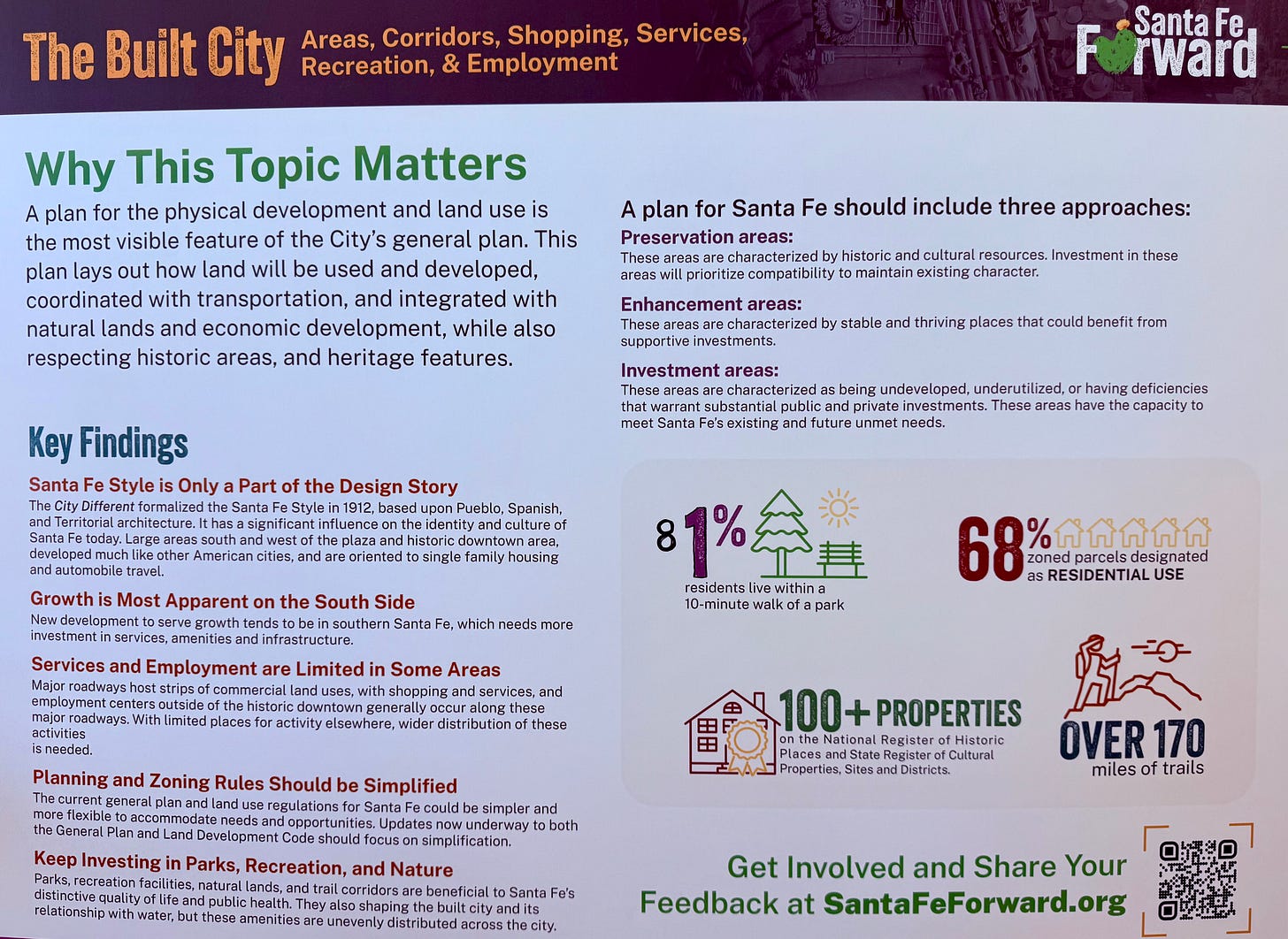Click above, as they say, for my recent presentation, kindly curated on YouTube by Anne Kelly at the Historic Santa Fe Foundation.
I’ve been on hiatus in my hometown of Seattle, but now it’s time to return to where we last left off in Santa Fe, thinking about the future along with the past. A few weeks ago, on May 27, I shared a post titled “Leveraging Place in Santa Fe,” which explained my ongoing immersion in the city and encouraged others to adopt similar approaches.
The post recounts my journey as a relative newcomer using an “expat toolbox” to understand a place that is both historic and constantly evolving —a “palimpsest” of history, culture, and pressing social needs.
That article was the “why”—the personal and professional foundation for asking a familiar question: How do we look beyond the iconic “Santa Fe Style” to uncover, and truly leverage, the city’s layered and innate identity?
The Historic Santa Fe Foundation talk is presented in the video above and summarized below—a distillation of key lessons and practical tools, as well as an offering of my urban diary construct to help those interested in seeing “The City Different” with fresh eyes and to participate in its future in a meaningful way.
The presentation began by recounting the modern relevance of the “City Different” approach from the City Beautiful era and (borrowing from Friends of Santa Fe Architecture’s (FSFA) current ReStyle exhibit in conjunction with the city Arts and Culture Department) referencing possible alternatives for the Santa Fe Style in 2050 [00:08].

I introduced a “post-dystopian community” concept called “Re-Flow,” which our charrette team completed as part of FSFA’s charrette effort, where water becomes a revered resource and a central part of the community’s identity [00:56].
I emphasized that, contrary to John Pen LaFarge’s musings about “the back side of nowhere,” Santa Fe is “very much on the front side of somewhere,” urging a proactive approach to its ongoing development [03:03].
A key theme of the talk was the often-used idea of a city’s “DNA.” As I argue in Sustaining a City’s Culture and Character, a place’s identity cannot be defined by a single viewpoint but must be co-created [05:04]. I posed the “replacement question”: If Santa Fe were to disappear, how would we rebuild it? This thought experiment encourages us to move beyond simply replicating the past [06:11].
Inspired by Georgia O’Keeffe’s view of the world as shapes, I encouraged the audience to consider how they see their environment and to avoid common “memes” that can limit our understanding [08:37]. The Santa Fe Plaza, for instance, is a social space premised on centuries-old concepts of safety that stand in contrast to the commercial, subdivision-like origins of the Jeffersonian National Grid [13:11].
To help in this process of understanding, I mentioned the “urban diary” as a tool for purposeful observation [27:00]. By documenting our urban environments through photos, sketches, notes, audio, video, or digital tools, we can all become “city planners” in our own right. My book, Seeing the Better City, further elaborates on this concept, stressing the importance of citizen input in urban change and associated planning and regulatory processes, such as Santa Fe’s ongoing Santa Fe Forward [29:34].
Finally, I cautioned against common traps, such as nostalgia and a narrow focus on aesthetics, and emphasized the importance of addressing equity and social justice [33:19]. Understanding Santa Fe’s historical depth and varied eras is crucial to collectively shaping its future [46:03]. It’s important to give context to terms like “authenticity” and “character,” which can be meaningless otherwise [50:30].
Ultimately, by leveraging place, I mean utilizing the tools of observation and co-creation to marshal city identity and inform alternative futures.






